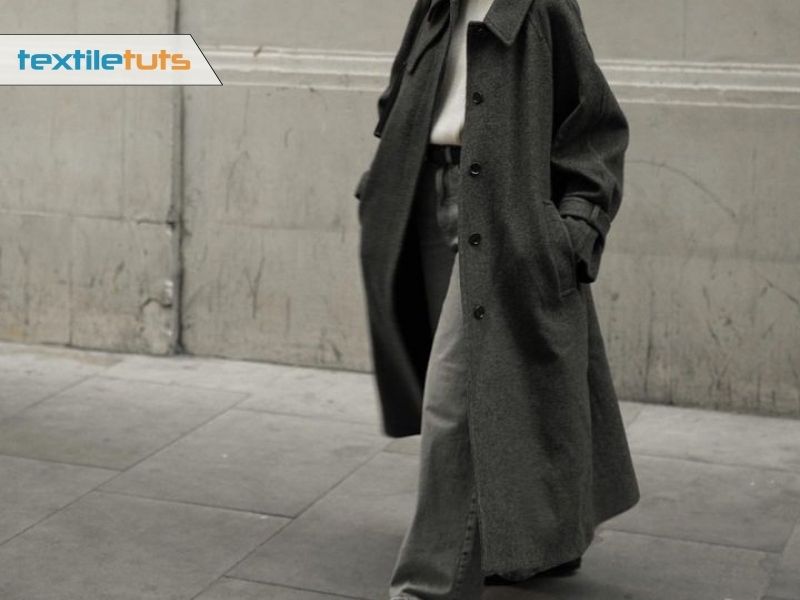Can You Stretch A Wool Coat? – Tips And Considerations
Wool coats are luxurious and classic clothing that always stays in style. They are highly durable and can last for years, making them an excellent investment for your winter wardrobe. However, one of the most common concerns among wool coat owners is whether they can stretch their coats to fit better or accommodate layers.
Stretching a wool coat is possible, but you must be cautious and follow the proper steps to avoid damaging the fabric. Wool is a natural fiber that can be stretched to some extent, but excessive force or improper techniques can lead to irreversible damage.
In this blog post, I’ll explore the different methods of stretching wool coats and the factors influencing their effectiveness. I’ll also discuss the risks of stretching wool coats and offer tips on preventing damage.
Stretching a Wool Coat: Is It Possible?
You can stretch a wool coat to a certain extent. Still, there are limitations to how much it can be stretched without potentially damaging the fabric or altering the coat’s overall appearance.
Wool is a natural fiber that can be stretched when wet but can also lose shape or become misshapen if not appropriately treated. So, it’s essential to approach stretching with caution to avoid irreversible damage.
Wearing the coat indoors gradually helps it adjust to your body shape. Wool fibers can be relaxed using steam, moisture, or heat. You should consult a professional tailor with experience working with wool for significant changes.
Be patient and avoid excessive force. Testing a small area first is wise, as damage may be irreversible.
4 Reasons to Stretch a Wool Coat
Stretching a wool coat is usually done to improve its fit, especially if the coat feels too tight or constricting when worn.

Wool is a natural fiber that has some elasticity, but it may not always conform perfectly to your body shape or allow for extra layers of clothing underneath.
Stretching a wool coat can make it more comfortable and functional for your needs. There are a few reasons why someone might choose to stretch a wool coat:
Size Adjustment
If a wool coat is slightly too small, stretching it can help achieve a better fit. This can be useful if you’ve lost weight or purchased a coat that’s just a tad too tight.
Comfort
Even if a wool coat fits well, you might want to stretch it a bit for added comfort. This is especially true for outerwear, where you might be wearing thicker clothing underneath, and a little extra room can help with mobility and layering.
Shrinking
On the other hand, if a wool coat has accidentally shrunk due to improper washing or drying, stretching it back to its original size can be a way to salvage it.
Evening Out Wrinkles
Over time, wool coats can develop wrinkles or creases that are difficult to remove. Gentle stretching can help smooth out these wrinkles and restore the coat to a more polished appearance.
Factors to Consider Before Stretching Your Wool Coat
Before deciding to stretch your wool coat, there are several important factors to consider. Stretching a garment, especially one made of wool, requires careful consideration to avoid damaging the fabric or altering the coat’s appearance. Here are some factors to keep in mind:

Fabric Type and Quality
The type and quality of the wool fabric will impact how well it responds to stretching. Natural fibers like wool have a certain level of elasticity, but overstretching can lead to permanent damage.
High-quality wool is more likely to retain its shape after stretching compared to lower-quality fibers.
Construction and Seams
The coat’s construction and seams play a crucial role in how well it can be stretched. Stretching might affect the placement and integrity of seams, pockets, and other details. If the coat has complex construction, stretching could lead to distortion or seam breakage.
Current Condition
Assess the current condition of the coat. If it’s already showing signs of wear, stretching might exacerbate these issues or cause further damage. Check for weak spots, thinning fabric, and potential areas of strain.
Fit Goals
Clearly define what you’re hoping to achieve through stretching. Do you want a more relaxed fit, extra room for layering, or a slight adjustment for comfort? Knowing your goals will help you determine how much stretching is necessary.
Professional Expertise
If you’re uncertain about the stretching process or worried about damaging your coat, it’s advisable to consult a professional tailor. They have the knowledge and experience to assess whether stretching is appropriate for your coat and can perform the process correctly.
Type of Stretching Method
Different stretching methods exist, such as steam stretching, wearing the coat with damp fabric, or using stretching frames. Research each method and choose the one that seems most suitable for your coat’s material and your comfort level.
Tolerance for Risk
Stretching any garment involves a certain level of risk. There’s a chance that the fabric may not react as expected or that the stretching process might cause unintended consequences. Consider your tolerance for risk and whether you’re prepared to accept potential outcomes.
Time and Patience
Stretching a wool coat is not an instant process. It may take some time for the fabric to relax and conform to the new shape. Be patient and allow the process to unfold gradually.
Age of the Coat
Older coats might be more fragile and prone to damage during stretching. Consider whether the coat’s age makes it a candidate for stretching or if it’s better to invest in a new one.
Alternatives
Is stretching the only solution? Sometimes, altering the coat in other ways, like adjusting the buttons or adding inserts, can achieve the desired fit without altering the fabric itself.
Trial Run
Before committing to any stretching method, consider doing a trial run on a small, inconspicuous area of the coat. This will give you an idea of how the fabric responds and whether the method is suitable.
Methods for Stretching a Wool Coat
When it comes to achieving the perfect fit for your wool coat, there are several methods available to stretch it to your desired dimensions.

Each method has its own set of benefits and considerations, ensuring that your wool coat fits comfortably and looks stylish. Here are five common methods for stretching a wool coat:
Stretching by Hand
Stretching with Towels
Steam Method
Blocking Method
Professional Tailoring
Potential Risks of Stretching a Wool Coat
Stretching a wool coat can have several potential risks, as wool is a delicate and sensitive material. Here are some risks associated with stretching a wool coat:

Permanent Distortion
Wool fibers can be easily stretched out of shape, and once stretched, they may not return to their original form. This can result in permanent distortion of the coat’s fit and appearance, making it look uneven or misshapen.
Loss of Structure
Wool coats often have tailored structures and designs. Stretching the coat improperly can lead to the loss of its intended structure, such as seams, darts, and pleats, affecting the overall look and fit of the coat.
Fabric Damage
Applying excessive force while stretching the wool fibers can cause the fibers to break or weaken, leading to visible damage, thinning, or even holes in the fabric. This can significantly reduce the coat’s longevity and aesthetic appeal.
Color Fading
Stretching the fibers can cause them to become thin and transparent in some areas, which might lead to uneven color fading or a change in the coat’s overall appearance.
Texture Changes
Stretching can alter the texture of the wool, making it feel rough or uneven in certain areas. This can be uncomfortable to wear and diminish the coat’s original softness.
Inconsistent Stretching
Different parts of the coat might stretch unevenly if not stretched carefully and uniformly. This can result in a coat that fits awkwardly and looks asymmetrical.
Unintended Fit
Stretching a wool coat without proper care and attention to detail can result in an unintended fit that doesn’t match the wearer’s body shape, potentially making the coat uncomfortable to wear.
Lining and Detail Damage
Wool coats often have linings, buttons, zippers, and other details that can be damaged if excessive force is applied during stretching. These details may not be able to withstand stretching in the same way as the wool fabric.
Shrinking in Other Areas
In an attempt to stretch the coat in a specific area, you might inadvertently cause other areas of the coat to shrink or contract, leading to an overall ill-fitting garment.
Unpredictable Results
Wool is a natural fiber, and its response to stretching can be unpredictable. It’s challenging to control the extent and direction of stretching accurately, which can lead to unintended consequences.
Precautions and Tips for Successfully Stretching a Wool Coat
Stretching a wool coat requires careful attention and a systematic approach to avoid damaging the fabric or altering the coat’s appearance.
Here are some precautions and tips to ensure successful stretching:
Consult a Professional Tailor
If you’re unsure about stretching your wool coat yourself, consult a professional tailor. They can assess the coat’s condition, fabric, and construction, and provide expert guidance on the best stretching method.
Choose the Right Method
Research various stretching methods and choose the one that best suits your coat’s material and your comfort level. Steam stretching, wearing the coat with damp fabric, and using stretching frames are some options.
Test a Small Area
Before applying any stretching method to the entire coat, test it on a small, inconspicuous area. This will help you gauge how the fabric responds and whether the process is suitable.
Use Steam with Caution
Steam can relax the wool fibers, making them more pliable. Use a garment steamer or hang the coat in a steamy bathroom. However, be cautious not to oversteam, as excessive heat can damage wool fibers.
Gently Stretch
Whether you’re wearing the coat while damp or using a stretching frame, apply gentle, gradual pressure. Avoid sudden or forceful stretching, as this can lead to irreversible damage.
Check Seams and Details
Pay close attention to seams, pockets, and other details. Stretching might affect the placement and integrity of these elements. Monitor them closely to ensure they’re not distorted or stressed.
Monitor Progress
Check the progress of stretching regularly. You want to achieve the desired fit without going too far and causing damage.
Allow Time to Settle
After stretching, allow the coat to settle for a while before assessing the final fit. Wool fibers need time to adjust to the new shape.
Avoid Overstretching
Be cautious not to overstretch the coat, as this can lead to unsightly distortions and affect its overall appearance.
Avoid Excessive Force
Never force the coat to stretch beyond its limits. Wool fibers can only stretch so much before they become damaged or lose their integrity.
Be Patient
Stretching a wool coat is not an instant process. Patience is key to achieving the best results. Rushing the process can lead to undesirable outcomes.
How can I prevent my wool coat from shrinking when washing?
To prevent your wool coat from shrinking when washing, avoid hot water and high heat drying. Use cool water and gentle cycle for washing, and lay flat to air dry. This will help prevent the preshrunk cotton shrink issue from affecting your coat’s size.
Final Words
While it is possible to stretch a wool coat, take the necessary precautions and seek the help of a professional tailor to avoid causing damage to the fabric. Wool is a delicate material that requires specialized care and handling.
Suppose you want to ensure that your wool coat retains its shape and quality over time. In that case, it is important to invest in high-quality garments, store them properly, and seek professional assistance when necessary.
With proper care and maintenance, your wool coat can last for years to come, providing you with comfort, style, and warmth in the colder months.

